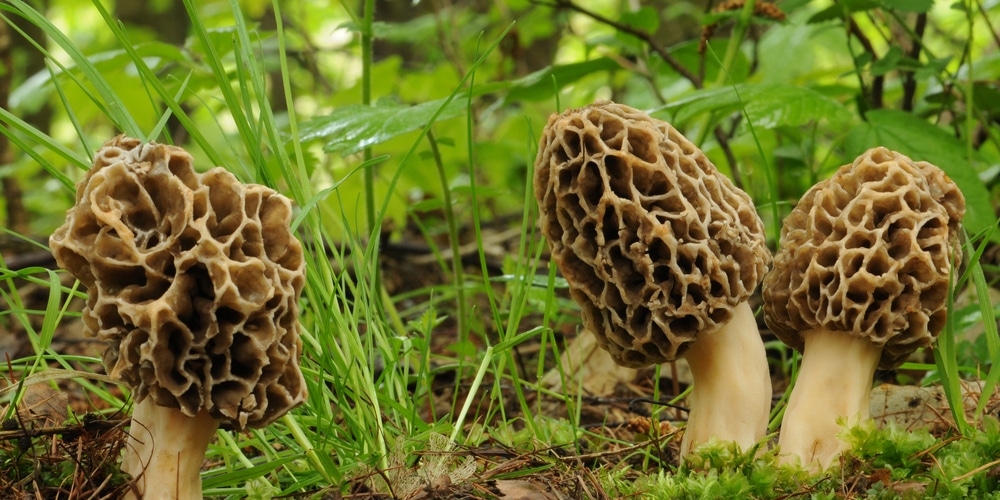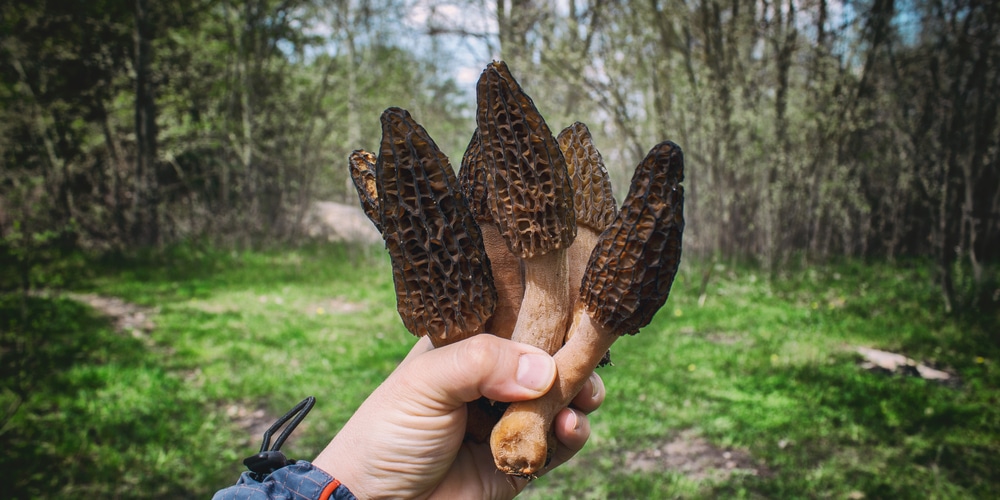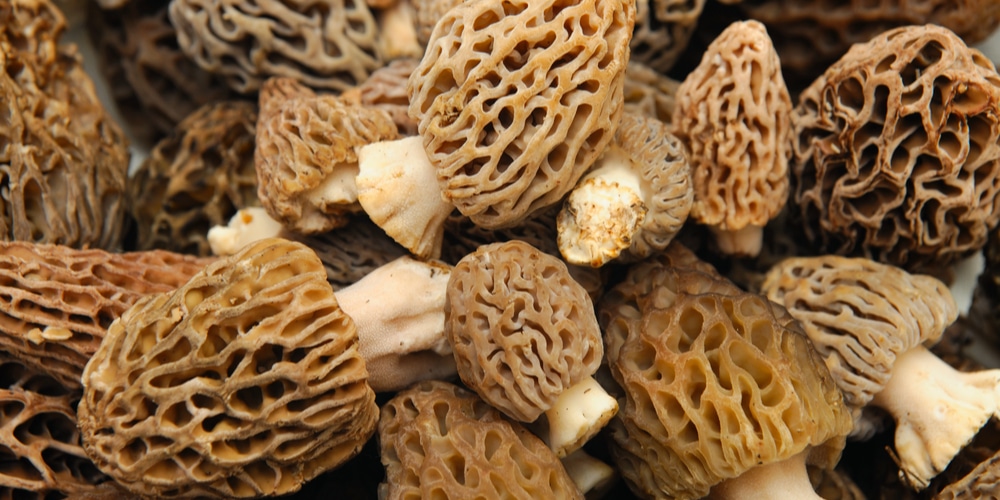Although morel mushrooms have a complex life cycle, growing them is not impossible. The reason that most growers find cultivating morels hard is that these saprobic fungi are very picky. So, they need a dedicated process centered around their ideal growing conditions and nutrient regimes.
Do morel mushrooms grow in Alabama? The answer is a resounding yes. Besides, we know that Terry Farms built a morel growing facility in Auburn. In 1995, the company bought the rights to the U.S. patent cultivation process from Neogen Corporation. For more details on this story, read page 54 of the Ecology and Management of Morels Harvested From the Forests of Western North America.
Where Do Morel Mushrooms Grow In Alabama?
Wild morels prefer a rich sandy loam. In detail, aeration and soil porosity are two critical factors for these spring mushrooms. So, where you inoculate the spores may not be the same place where the morels grow if they do not find the right conditions.
In Alabama, the soil is well-draining and moderately permeable. But it is also fragmented in different geographical regions. This is why checking the published soil surveys is highly recommendable if you want to grow morels outdoors.
The good news is that you can grow morels everywhere in Alabama. In other words, most Morchella esculenta species are hardy to zones 4-9. So the Alabama planting zones, which range from 7a to 8b, are ideal for its mycelium.
The bad news is that morel cultivation still poses many challenges. And not even a patented cultivation method can ensure success. To clarify, the mentioned Terry Farms’s growing facility ended its operations in 1999.
Where Are Morels Commonly Found Growing In Alabama?
You can spot their conic heads with the characteristic honeycomb appearance in several locations. Mainly nearby most central and northern cities, such as:
- Auburn (you can also find Morchella crassipes and Morchella angusticeps)
- Huntsville
- Montgomery
You might also find some morels growing along the Cahaba River.
Morels hunters should look for dead trees with the white bark cracking off. In general, the first year dying trees with no more buds on them produce the best morel mushrooms. Of course, it is better to get them as low as possible without tearing the roots. Use a knife to sever the edible base from the ground.
Not only do morel mushrooms grow in Alabama forests, but they also grow in swampy ground and lightly burned grassy areas.
Important: Watch out for false morels (Gyromitra esculenta)!
4 Tips For Growing Morchella Varieties In Alabama
- Add salt and honey to control bacteria levels. Usually, one tablespoon of salt and two tablespoons of raw honey are more than enough to feed the mycelium if you use a dilute-and-spread method. Then, scoop out about two cups, place it in another bucket and dilute it with more water before pouring the spores into your garden.
- A single morel mushroom contains over 1 billion spores. If you soak some morels in a jar with water and then sprinkle that water in several outdoor locations, you might increase the rate of success.
- Grain spawn jars work well, too. Keep the temperature within 55-59 F.
- Use the buckshot method and experiment with different food sources. Blend a morel in a blender with filtered water and pour the mixture into a sanitized bucket. Then, fill it with wood chips or shavings from a recently cut tree—using freshly cut trees reduces the risk of contamination. In brief, morels have a symbiotic relationship with many trees like elms, oaks, and poplars. But also with grasses like blackberries, moss, and sunchokes.
3 Tips For Finding Morel Mushrooms In Alabama
- Do not expect morel mushrooms to grow in the same place every year because they are picky about their ideal conditions. They might spawn suddenly in nearby areas but usually take 40 days to develop fully. So, search the surroundings and take note of different factors like shade and vegetation. Morels only grow in fully shaded areas with high humidity levels. So, if the environment changes, they might not grow at all.
- Morels prefer moist or wet, fertile soil. So look in damp areas near river and lake banks as well.
- Use some Morel sighting maps to get an idea of where you might find them this year. For example, download the iNaturalist app on your phone and see where other members found morels in Alabama.


